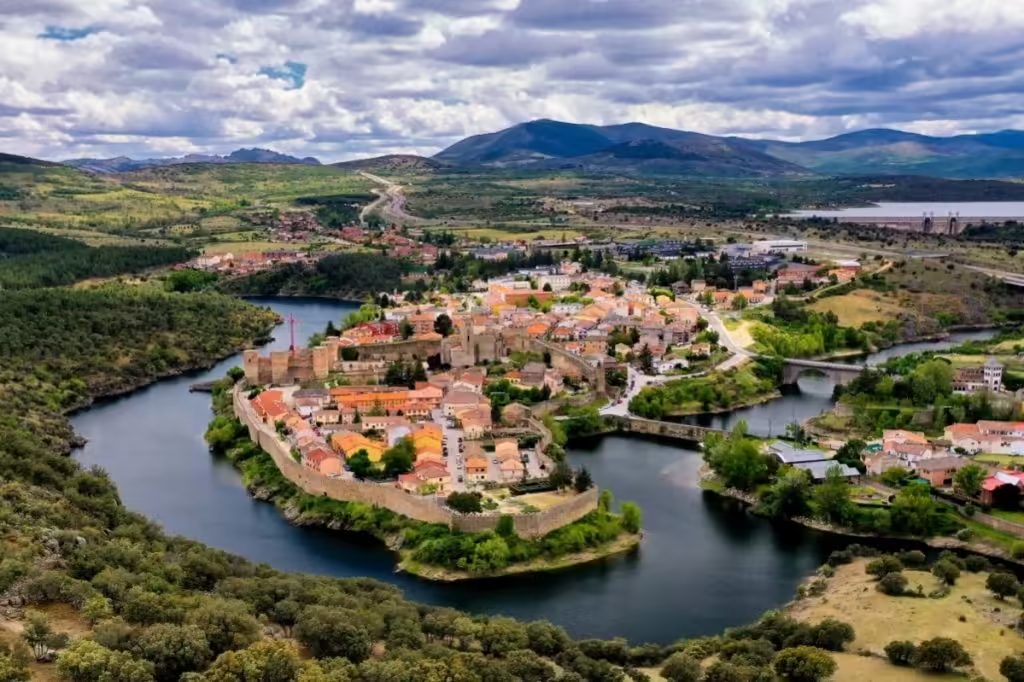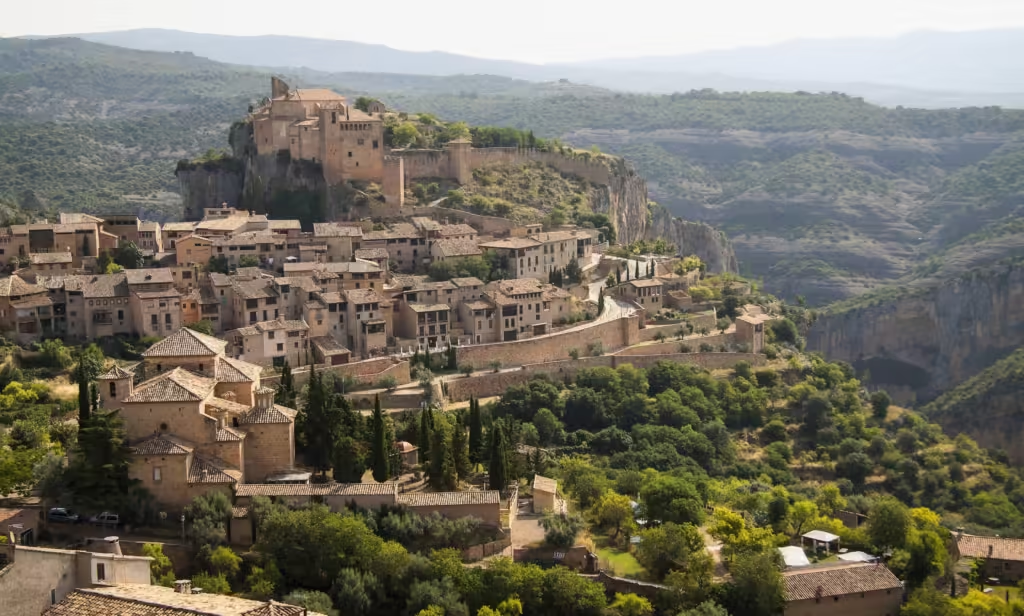Aigüestortes i Estany de Sant Maurici National Park, often referred to more simply as “Aigüestortes,” is a stunning protected area nestled in the heart of the Spanish Pyrenees. This renowned destination captivates visitors with its soaring peaks, crystalline lakes, and vibrant biodiversity. Whether you’re an avid hiker, nature photographer, or traveler seeking a peaceful escape, this park has something for you. In this comprehensive guide, we’ll explore its highlights, provide crucial travel tips, and help you plan an unforgettable trip.

Why Aigüestortes is Worth Visiting
Aigüestortes i Estany de Sant Maurici National Park is located in the Catalan Pyrenees, in the province of Lleida, Spain. The name “Aigüestortes” translates to “twisting waters,” referencing the winding rivers and countless alpine lakes that dot this remarkable landscape. With peaks soaring over 3,000 meters and more than 200 lakes, the park offers a diverse range of natural wonders. Here are some key reasons why travelers flock to this mesmerizing destination:
Spectacular Scenery: Snow-capped mountains, turquoise lakes, and lush forests combine to form an enchanting panorama.
Pristine Ecosystems: The park shelters rare species, including the bearded vulture, golden eagle, and Pyrenean chamois.
Outdoor Adventures: From gentle hikes to challenging treks, visitors have plenty of options to explore the park’s majestic terrain.
Cultural Richness: Quaint villages near the park showcase the region’s rich Catalan heritage, offering travelers a glimpse into local traditions.
Best Time to Visit Aigüestortes
Most travelers visit Aigüestortes during the warmer months (June to September), when temperatures are mild, and the trails are usually snow-free. However, the park is enchanting year-round:
Summer (June–August): Warm weather allows easy trekking, and alpine flora blossoms in full glory. Be aware, though, that this is peak tourist season.
Fall (September–November): Autumn foliage enhances the scenery with brilliant reds, oranges, and yellows. Visitor numbers decrease, making this period ideal for those seeking tranquility.
Winter (December–February): Heavy snowfall transforms the park into a wonderland of ice-covered lakes and frosty forests. Skiing and snowshoeing become popular, but some trails may be restricted.
Spring (March–May): Melting snow creates roaring waterfalls, and the landscape awakens with lush greenery. Temperatures may still be cool, so bring appropriate layers.
How to Get to Aigüestortes i Estany de Sant Maurici
By Car
Most visitors opt to rent a car in Barcelona or other major cities in Catalonia. From Barcelona, Aigüestortes is approximately 250 kilometers away. The drive usually takes around three to four hours. You can take the C-13 highway northwards toward the town of Sort, then follow signs to the park’s various entrances, such as Espot or Boí.
By Public Transport
Although less direct, public transport is available. Take a bus from Barcelona to the town of Vielha or Sort, then switch to a local bus heading to Espot or Boí. Schedules can vary seasonally, so it’s crucial to check timetables in advance.
By Organized Tour
Numerous tour operators offer day trips or multi-day excursions to Aigüestortes. These tours often include transportation, guided hikes, and accommodation. While more expensive than independent travel, guided tours can be an excellent choice if you’re short on time or prefer hassle-free planning.
Top Attractions in the Park
Estany de Sant Maurici
One of the park’s signature sites is Estany de Sant Maurici. This sparkling lake sits at the foot of dramatic mountain summits, including Els Encantats. The vantage points around the lake are ideal for capturing postcard-perfect photos. A moderate hiking trail circles the lake, offering panoramic views of crystal-clear waters and rugged peaks.
Aigüestortes Plateau
The Aigüestortes plateau is distinguished by meandering streams, marshes, and a unique mosaic of wetlands. Accessible from the Boí Valley entrance, it offers gentle trails that appeal to families or travelers seeking a less strenuous experience. You’ll find wooden walkways and educational panels explaining the area’s significance, making it a perfect spot for nature lovers.
The Boí Valley Romanesque Churches
Near the park’s western entrances, the Boí Valley is home to a cluster of UNESCO-listed Romanesque churches. These beautifully preserved buildings date back to the 11th and 12th centuries, highlighting intricate frescoes and architectural styles unique to the region. Touring these historic landmarks provides insight into Catalonia’s artistic and religious past.
Pic de Peguera and High Mountain Summits
For seasoned hikers looking to test their skills, there are challenging treks to peaks like Pic de Peguera or Pic de Subenuix. The routes can be steep and require adequate preparation, but the spectacular vistas from the summits reward every effort. Always check local conditions and consider hiring a mountain guide if you’re inexperienced in high-altitude trekking.
Popular Activities
Hiking and Trekking
Hiking is the primary reason many visit Aigüestortes. The park boasts over 50 signposted trails, ranging from short, family-friendly routes to multi-day treks like the Carros de Foc circuit. A map of the park’s trails is available at visitor centers in Espot or Boí. Always carry essential gear, check the weather forecast, and practice “Leave No Trace” principles to protect the environment.
Wildlife Watching
Nature enthusiasts can spot fascinating wildlife, including marmots, wild boars, and soaring birds of prey. Early mornings and late afternoons provide the best chances for sighting these creatures in their natural habitat. Bringing binoculars and moving quietly often increases your odds of catching a glimpse of shy species.
Photography Expeditions
Photographers are drawn to Aigüestortes for its changing light conditions and incredible scenery. Misty mornings by a serene lake or sunset over a craggy mountain ridge can produce breathtaking images. Consider visiting in autumn when fiery foliage adds rich color contrasts to your shots.
Winter Sports
In the colder months, the park caters to winter sports enthusiasts. Snowshoeing, Nordic skiing, and even backcountry skiing are popular activities. Local guides can lead you along safe routes and instruct you in proper avalanche precautions if you venture off the beaten path.
Where to Stay
Mountain Refuges
Scattered throughout the park, mountain refuges offer dormitory-style accommodations for hikers. They serve basic meals and provide essential facilities. These refuges are particularly popular among those undertaking multi-day treks, such as the iconic Carros de Foc route. Reservations can fill up quickly during peak season, so book in advance.
Hotels and Guesthouses in Nearby Villages
If you prefer more comfort, villages like Espot, Boí, and Taüll feature cozy inns, family-run hotels, and guesthouses. Staying in a local village provides the chance to experience Catalan hospitality and sample regional cuisine. Popular dishes include escudella (hearty soup), cured meats, and artisanal cheeses. Booking a few nights in these villages allows you to explore both the park and nearby cultural sites.
Campsites
For budget travelers or adventure seekers, campsites around the park are a great option. Many sites have modern facilities, including hot showers, electricity, and Wi-Fi. Camping immerses you in the lush environment, but remember to follow park regulations and respect the wilderness.
Practical Tips for a Successful Visit
Purchase a Park Map: Although trails are well signposted, having a reliable map helps plan routes effectively.
Respect Park Rules: Drones are often restricted, and you should not disturb wildlife or remove natural objects.
Stay Hydrated and Protected: Bring enough water, sunscreen, and a hat, especially on hot summer days.
Dress in Layers: Weather can change rapidly in mountainous regions. Carry a waterproof jacket and insulating layers.
Check Trail Conditions: Snow or ice can linger into late spring at higher elevations, so always verify trail updates.
Learn Basic Spanish or Catalan: Locals appreciate when visitors make an effort to speak a few phrases, even if English is widely understood in tourist areas.
Cultural and Historical Insights
Beyond its scenic vistas, Aigüestortes i Estany de Sant Maurici offers a window into the Catalan Pyrenees’ heritage. Small towns and hamlets around the park are steeped in traditions passed down through centuries. Festivals celebrating patron saints, local craft markets, and folk music events add depth to any visit. Consider attending these festivities to experience the region’s warm, convivial atmosphere and learn about its customs firsthand.
Aigustores – A Unique Shopping Experience
While exploring Aigüestortes, you may come across shops or local markets sometimes referred to (informally) as “Aigustores,” where artisans sell handmade crafts, local produce, and souvenirs. Though not an official term, many travelers use “Aigustores” to describe the range of small shops around the park that stock everything from handcrafted wooden items to local cured meats.
Artisanal Products: Look for pottery, woven textiles, and intricate wooden carvings that showcase the Pyrenees’ craftsmanship.
Local Delicacies: Sample jamón ibérico (Iberian ham) and artisan cheeses, often produced on nearby farms.
Eco-Friendly Souvenirs: Consider purchasing eco-friendly products or locally made soaps that support sustainable tourism.
Shopping at these “Aigustores” not only enriches your travel experience but also contributes to the local economy, helping preserve the cultural and economic fabric of the region.
Frequently Asked Questions (FAQ)
1. Do I need a permit to enter Aigüestortes i Estany de Sant Maurici National Park?
No permit is required for day trips. However, if you plan to stay overnight in mountain refuges, you should make reservations in advance. Some high-altitude treks or specialized activities might require a guide or additional paperwork.
2. Is Aigüestortes suitable for family vacations?
Yes. While there are challenging treks, numerous trails are gentle enough for children. The park’s visitor centers provide educational resources, and kids often enjoy spotting wildlife or exploring the wooden walkways on the Aigüestortes plateau.
3. What are the must-try foods in the region?
Catalan cuisine near the park focuses on hearty dishes, such as escudella (a filling soup), black sausage, and locally produced cheeses. Don’t miss the chance to taste Catalan desserts like crema catalana, a sweet custard dessert.
4. How many days should I plan for a visit?
You can see many highlights in two or three days, including short hikes and visits to nearby villages. If you aim to tackle longer treks or spend time photographing wildlife, consider staying at least four to five days.
Planning Your Itinerary – Final Thoughts
Aigüestortes i Estany de Sant Maurici National Park is an unmissable destination for anyone seeking natural beauty, outdoor adventure, and cultural immersion. Its breathtaking lakes, lush forests, and dramatic mountain peaks epitomize the splendor of the Pyrenees. Whether you’re taking leisurely walks along well-marked paths or challenging yourself on high-altitude routes, you’ll encounter vistas that spark awe and wonder.
Exploring the nearby villages provides a unique insight into Catalan heritage. From Boí Valley’s UNESCO-listed Romanesque churches to artisanal crafts in local “Aigustores,” you’ll discover how deeply rooted traditions continue to shape life in this region. Whenever you go, remember to respect the pristine environment by leaving no trace, supporting responsible tourism, and engaging with local communities.
With proper planning, including checking weather conditions, booking accommodations early, and preparing the right gear, your trip to Aigüestortes will surely be a highlight of your travel experiences in Spain. Start packing your hiking boots and camera gear—an unforgettable journey awaits in one of the most beautiful corners of the Iberian Peninsula.

